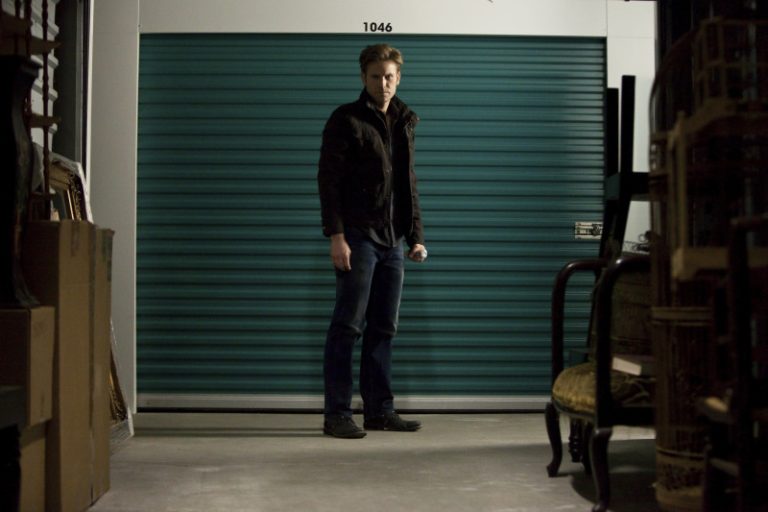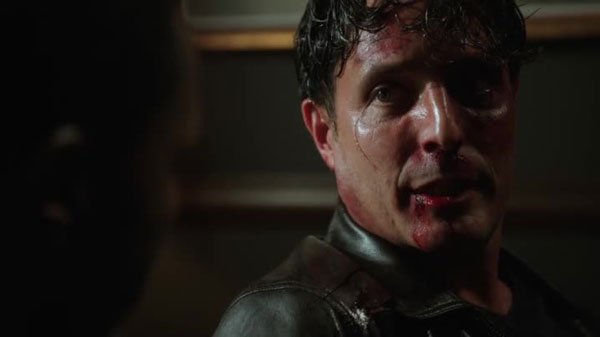Why You Should Be Watching The Vampire Diaries
An Essay in Three Parts
It’s easy to dismiss The Vampire Diaries as another CW teenage drama. You have the requisite beautiful faces and bodies that experience augmented amounts of angst week in and week out. This is all true, but The Vampire Diaries brings something more to the table than simple soap storytelling. The series, based on a set of novels by LJ Smith, chronicles the lives and relationships of Elena Gilbert. While there are notable intersections between the novels and its television adaptation, it is important to note the word “adaptation” here. The television series is a separate story from the novel, and it indulges in social commentary in a way that its genre predecessors like True Blood and Buffy the Vampire Slayer did.
The Vampire Diaries has shown its potential for addressing relevant social issues by using the supernatural and the preternatural as allegories. Elena, like Buffy and Sookie, provides a human lens through which to see the marginal and often misunderstood community of the vampire, the werewolf, and all other things and beings seen as “monstrous” or “inhuman.” These creatures are not simply night stalkers or empty icons of horror. In the world of Mystic Falls, these creatures have feelings and histories that make them more than the things that go bump in the night.
In this series of essays, leading up to the April 7th return of TVD, I’d like to take the opportunity to explain three reasons why “You” should be watching this show. Overall, the essay will focus on the main themes that have emerged over the last season and a half in TVD, with an emphasis on the three main characters: Elena Gilbert, Stefan Salvatore, and his brother, Damon. The first part of the essay will examine the main female character of Mystic Falls, Elena; the second part will examine the main male character of Mystic Falls, Stefan Salvatore; the third part will examine the main monster of Mystic Falls, Damon Salvatore. Each part will use the character as a way of understanding the explicit and implicit topics that have made The Vampire Diaries a show to watch and pay attention to.
Our Point of Contact: Elena, the Girl-Woman of Mystic Falls
A Gendered and Doubled Experience of Love, Life, and Loss
This afternoon, as I was wandering through the aisles of a local department store, I came across a row of handbags emblazoned with The Vampire Diaries logo. I stopped and flipped through the bags, checking to see what designs they had. I was surprised by the fact that there were four basic designs: Damon Salvatore, Stefan Salvatore, and two non-descript bags with the show’s recognizable font. My first question, to myself of course, was: Where’s Elena? One of the dangers of the teen drama, at least the contemporary versions on television, is the concentrated attention on the male leads. Often the men are objectified, used as evacuated images that can be filled by the wanderings of teenage girl fantasies. However, good shows take the opportunity to use the female character as a way of addressing what it means to grow up and into society, as a girl-woman.
There are a host of female characters on TVD, both young and mature. But what do they (as characters) reveal to the audience about the gender experience of Mystic Falls? Let’s take a look at Elena and through her, you will see that the most important themes of the Vampire Diaries have nothing really to do with being a vampire.
As stated before, Elena is the lens through which we, as audience, see the story of The Vampire Diaries unfold. She is the narrative point of view, generally. Although the show begins with Stefan telling us that this is “his story,” that claim quickly dissolves when we realize that the object of his story, the main character as you will, is Elena Gilbert. Thus, her experience is crucial because it is the lightning rod storyline – everything that touches Elena reverberates throughout the story’s landscape. So who is she?
Elena, in the television version, is an orphan. We first see her as the afterimage of a child, one who has suffered a traumatic event which threatened her life and took the lives of her beloved parents. She is part of a nuclear family that includes her brother and her aunt; she is part of a larger social family that includes an ex-boyfriend and two best girlfriends. However, it is her interaction with the Salvatore brothers that finally begins to unwind the complex relationships in Mystic Falls. These relationships expose the secrets at the heart of the town’s identity.
So far, Elena’s experiences mark three major themes of The Vampire Diaries. First, her doppelganger, in the form of Katherine, makes explicit the doubling theme throughout the storyline, especially with the female characters. Second, her coming of age narrative reveals the constant confusion and struggles between childhood and adulthood that the television series highlights. Finally, Elena’s relationships act as the catalyst for uncovering the web of mysteries, lies, and deceptions that buffer the town from its history and its crimes. As Elena’s life encounters and engages the supernatural, her town feels the effect. She is ground zero for the explosion.
Mirror, Mirror…..
When we first meet Elena, we are not aware that there is a double lurking in the shadows. We are not aware of Katherine. In the novels,

Katherine is not Elena’s doppelganger but rather the succubian creature that turns the brothers Salvatore in Renaissance Italy. When we meet Katherine, finally, the television series makes it known that not only is Katherine the one who turned Damon and Stefan, but that she, like Elena, is the iconic figure who tore the brothers apart. Rather than using Renaissance Italy as the historical period from which the story emerges, the television adaptation chooses US Civil War-era Virginia, which provides a mirror time period against which to measure the relationships and tensions in contemporary America.
 The first time that we see Elena as she sees herself, the blurred images of her parents haunt the margins. This glimpse of the mirrored Elena emphasizes the split between Elena; she is already a divided psyche when we meet her. This becomes even more apparent when Katherine comes to town. Katherine is the tangible and physical evidence of the mirror, but a mirror broken.
The first time that we see Elena as she sees herself, the blurred images of her parents haunt the margins. This glimpse of the mirrored Elena emphasizes the split between Elena; she is already a divided psyche when we meet her. This becomes even more apparent when Katherine comes to town. Katherine is the tangible and physical evidence of the mirror, but a mirror broken.
The English teacher in me wants to point out that mirrors are a pattern in The Vampire Diaries, appearing again and again throughout the series as touchstone moments when a character confronts or is confronted. Such patterning also provides a certain level of irony given the presence of vampires, a creature traditionally unable to see itself in the mirror. However, as Twilight has done so has The Vampire Diaries, and that is alter vampire mythology to serve storyline purposes.
The mirror is a refractory device. It does not reflect truth; mirrors always show the reverse,  the refracted image that is present to the self, not to the world. And this refraction infiltrates the story of Elena and her extended family. From Bonnie’s maturation into her own supernatural powers to Caroline’s transformation from pageant queen to vampire, the technique of doubling is used with most of the female characters, as well as the male characters. Stefan’s doubled nature, between the calm and loving man to the blood hungry and aggressive vampire, collides when shatters the mirror.
the refracted image that is present to the self, not to the world. And this refraction infiltrates the story of Elena and her extended family. From Bonnie’s maturation into her own supernatural powers to Caroline’s transformation from pageant queen to vampire, the technique of doubling is used with most of the female characters, as well as the male characters. Stefan’s doubled nature, between the calm and loving man to the blood hungry and aggressive vampire, collides when shatters the mirror.
The psychology of this doubling allows the viewer to feel safe with one persona while still acknowledging the darkness of the “other.” And in point of fact, the vampire, the werewolf, and even the witch, are all characters that invoke and reveal the “Other,” a marginal character who usually represents the cast off and the discarded of society. Feminist scholars, post-colonial scholars, and psychoanalysts have tried to point to how the “other” emerges in our social discussions. How do we deal with the wretched invisible once it becomes visible? This type of revelation is often the hallmark of a genre series, especially one that involves the fantastic.
TVD takes on this challenge in a multitude of ways, but the female characters are the most cogent examples of this process of discovery. For Elena, and the other female characters, the doubled natures of their existences expose the pain of moving from childhood into adulthood with varying degrees of stress. For example, Jenna’s character is a sort of reverse doubling. (By the way, nice nod to Buffy with the name: Jenna Sommers). We understand her, in the story, as the newly appointed guardian to Elena and her younger brother, Jeremy. But if you pay attention to the pattern of behavior and the amount of references to her life before her sister and brother-in-law’s accident, you will see that this “adult” version is a newly minted double. The pre-accident Jenna was admittedly immature and aimless, not tied to life in anyway beyond school and heartbreak. In fact, her romantic loss in the form of Logan Fell, allows us to see the vulnerable girl who gave way to the confused adult that we see as the adult figure.
The corpus of narratives centering on the female characters has lead to a variety of different storylines, but these narratives all hinge on two events: a tragic incident followed by a “new” version of the character. For Elena, we understand she is different, but we never see it. And we can’t nor should we. Elena’s doubling has to be reserved for the Katherine storyline. For Bonnie, the death of her grandmother allows her to start to realize the full extent of her power. And both Bonnie and her grandmother are also vague echoes of the character, Emily, who served as Katherine’s handmaiden/slave. For Caroline, the death of her body and the birth of her vampire self brings to light the self-esteem issues that plagued the young girl, since the vampiric rebirth in this fictional universe exaggerates the human emotional experience.
The hyper-emotionality of each character is juxtaposed against hypersexuality, which falls in line with the  coming of age motif that buttresses the series. Whereas the main male characters have already undergone their rites of passages, except for Jeremy and Tyler, the female characters are representative of different phases of the maturation process. The sexual tension of the main triangle, Elena/Stefan/Damon, emphasizes the bifurcated nature of sexual maturation. Elena’s confusion over her feelings for each brother reveals how sexuality plays a key to growing up. The push and pull between the three shows the difference between Elena’s sexual awakening as a woman with the historical triangle of Damon/Stefan/Katherine which focuses more on the sexual awakening and sexual distortions of the men. It is interesting to note that both Damon and Stefan are irrevocably damaged by their relationship with Katherine, whereas the slow and gradual build in the Elena triangle almost reflects a measured and considered sexual enlightenment, minus of course the hint of pedophilia that is inherent in a 16-17 year old girl’s affair with a 100 or so year old vampire. As the story unfolds, we should expect Elena’s confusion to become even more heightened as both brothers shed their vampire facades and reveal the humanity of their shared and separate histories, both good and bad, both moral and immoral.
coming of age motif that buttresses the series. Whereas the main male characters have already undergone their rites of passages, except for Jeremy and Tyler, the female characters are representative of different phases of the maturation process. The sexual tension of the main triangle, Elena/Stefan/Damon, emphasizes the bifurcated nature of sexual maturation. Elena’s confusion over her feelings for each brother reveals how sexuality plays a key to growing up. The push and pull between the three shows the difference between Elena’s sexual awakening as a woman with the historical triangle of Damon/Stefan/Katherine which focuses more on the sexual awakening and sexual distortions of the men. It is interesting to note that both Damon and Stefan are irrevocably damaged by their relationship with Katherine, whereas the slow and gradual build in the Elena triangle almost reflects a measured and considered sexual enlightenment, minus of course the hint of pedophilia that is inherent in a 16-17 year old girl’s affair with a 100 or so year old vampire. As the story unfolds, we should expect Elena’s confusion to become even more heightened as both brothers shed their vampire facades and reveal the humanity of their shared and separate histories, both good and bad, both moral and immoral.
As Elena’s “bildungsroman” (fancy lit term for coming of age) continues, we see that her development as a character closely mirrors the unfolding story of Mystic Falls. The secrets that lay beneath the town’s heritage equal and parallel the secrets that Elena is asked to hide as she discovers more and more about the town’s history and the presence of the supernatural. The intersection between these secrets has built toward the inevitable clash between the various populations or gangs involved in the vampire story, including the werewolf, the watcher, and the Firsts. As we have seen so far, Elena is a key player as the doppelganger. Her humanity represents the lynchpin for the spell that will break and/or change the sun and the moon curse (side note: can’t help but think of the  movie Ladyhawke when I wrote that line). Why Mystic Falls though? The social commentary that hides behind the southern setting is fairly obvious – marginal populations that must still deal with discrimination, fear, and danger? Even if they had not used the character of Emily in the storyline, the character of Emily would still exist, only namelessly.
movie Ladyhawke when I wrote that line). Why Mystic Falls though? The social commentary that hides behind the southern setting is fairly obvious – marginal populations that must still deal with discrimination, fear, and danger? Even if they had not used the character of Emily in the storyline, the character of Emily would still exist, only namelessly.
Elena’s progression and development gives us access to the psychological and sociological issues at play in The Vampire Diaries. Her innocence, as well as her guilt, make her vulnerable. Her vulnerability is the pathos moment for the audience. She must be approachable for the audience to invest in the story that her story reveals. As we move forward, we will see that both Stefan and Damon bring their own versions of the Mystic Falls story to the forefront, from redemption and salvation to forgiveness and vengeance.
In the next part of this series, we will take up the man of Mystic Falls and his place in the Vampire Diaries universe.
Homework for readers:
- Find or create a story/video/art that shows the mirrored life of Elena.
- What other mirrors are present in the narrative?
- Is a mirror a reflection, a refraction, or simply another fiction?
Until next time, let life bite you hard.
-Bookdal
{jcomments on}





